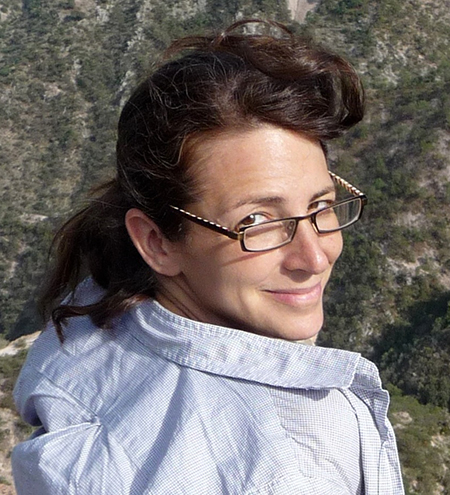I am delighted to welcome back Lindsay Bosch, Marketing & Development Manager of Video Data Bank, who this week writes on the lyrical work of Rebecca Baron. Founded at the School of the Art Institute of Chicago in 1976 at the inception of the media arts movement, the Video Data Bank is a leading resource in the United States for video by and about contemporary artists. The VDB has distributed Baron’s work for many years and we are thrilled to partner with the organizaiton for this special screening.

Most of our knowledge of history is also film history, of a type.
I was raised on Ken Burn’s slow pans over silver-tinted photographs of haunted Civil War soldiers. On the History Channel’s endless loop of newsreels showing B52 bombers. On classroom film strips advancing frames of American Presidents with each audio beep. In our historical education we have always been awash in documentary and documentation. My earliest encounters with events of the past were guided by educational film tropes; those decorous talking heads in book-lined offices, or self-confident British narrators interpreting black & white footage. We are taught history, and at the same time we are taught how to view history’s archive.
Rebecca Baron’s work helps us to unlearn, to upend, our documentary habits. She seeks to erase the narrative framework we picked up each time the substitute teacher put on a ½ hour VHS tape covering the whole of the Industrial Revolution. Baron’s classic works of the 1990s foreshadow our contemporary moment of rich engagement with experimental documentary, asking us for extraordinarily detailed consideration of their archive material. From the recovered photographs of nineteenth century adventurers trapped on an ice-flow in The Idea of North (1995), to a scrap of super-8 footage of an unidentified Cambodian worker in okay bye-bye (1998), Baron allows her documentaries to follow the winding lead of their source material. The films revel in specificity and repetition, referencing again and again the particulars of the images that they present. As viewers, we are brought into intimate detail with the grain of the images, with the varying contrast, the way they move and actually look. Baron’s footage does not stand in for an idea of Antarctic explorers, nor does it symbolize the Pol Pot regime, it simply is; as it is. Baron’s close material explorations invite questioning, softly raising those classic journalistic demands: Who? When? Why? Offering the central documentation repeatedly to her viewers, Baron rejects the imposition of historical narrative. As an audience member I always find myself asking, simply: What is this, exactly? Like Baron herself, I am compelled to know what motives, what inspiration, lead to the creation of these exact historical images.
Baron’s most recent work Detour de Force (2014), which we have the privilege of screening at Conversations at the Edge, offers 1960s documentation of eccentric, self-proclaimed psychic, Ted Serios. In archival audio and film footage, Serios seeks to demonstrate his mental powers over photography, performing for an adoring audience of researchers and reporters. Serios emerges as a fascinating, and complex subject, but the work offers more than biography. Baron’s meticulous editing and looping of this restored film highlights the inherent oddity of the situation and the scientific fervor surrounding Serios abilities. She writes:
“In much of my work there is a theme of the unspeakable or the unsayable. Sometimes my experience with images from the past is beyond words and I wanted to recreate that sense of wonder and curiosity for the audience. I didn’t want to make a biopic…I wanted the film to be focused on what the materials were saying.” (Rebecca Baron: Interview with Mark Alice Durant, Saint Lucy)
As a viewer of Baron’s work, I’m so grateful for her thoughtful creation of this space of curiosity. I’m drawn to the fact that she does not ask the historical documentation she works with to mean something particular, nor she plunder the archive in purpose of her story. Baron recognizes that the fact of the documentation itself is interesting enough, complicated enough, to give us pause. Its very existence makes it worthy of consideration. I read in Baron’s practice a deep-seated respect for the archive itself. With their inherent concern for materiality, Baron’s works serve to reveal the rich ambiguity of archival film. This careful uncovering and thoughtful investigation honors both the individualism of the historical subjects and our own relation to it.
Lindsay Bosch is the Marketing & Development Manager of the Video Data Bank, where she has worked in distributing, promoting and supporting media arts and artists since 2008. Lindsay has contributed to Chicago’s arts and education communities for over a decade, including work with the Museum of Contemporary Art, the Reeltime Film Forum, the Mary and Leigh Block Museum of Art, the American Library Association, and the Joan Flasch Artists Book Collection. She currently serves on the Educational Advisory Committee for the Chicago Film Festival and the Board of Directors of the National Alliance for Media Arts and Culture. Lindsay is the co-author of the textbook Icons of Beauty (ABC-CLIO, 2010) and writes on art and film publications for Booklist Magazine.